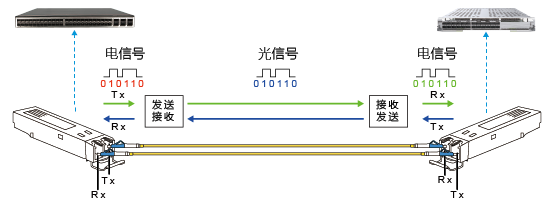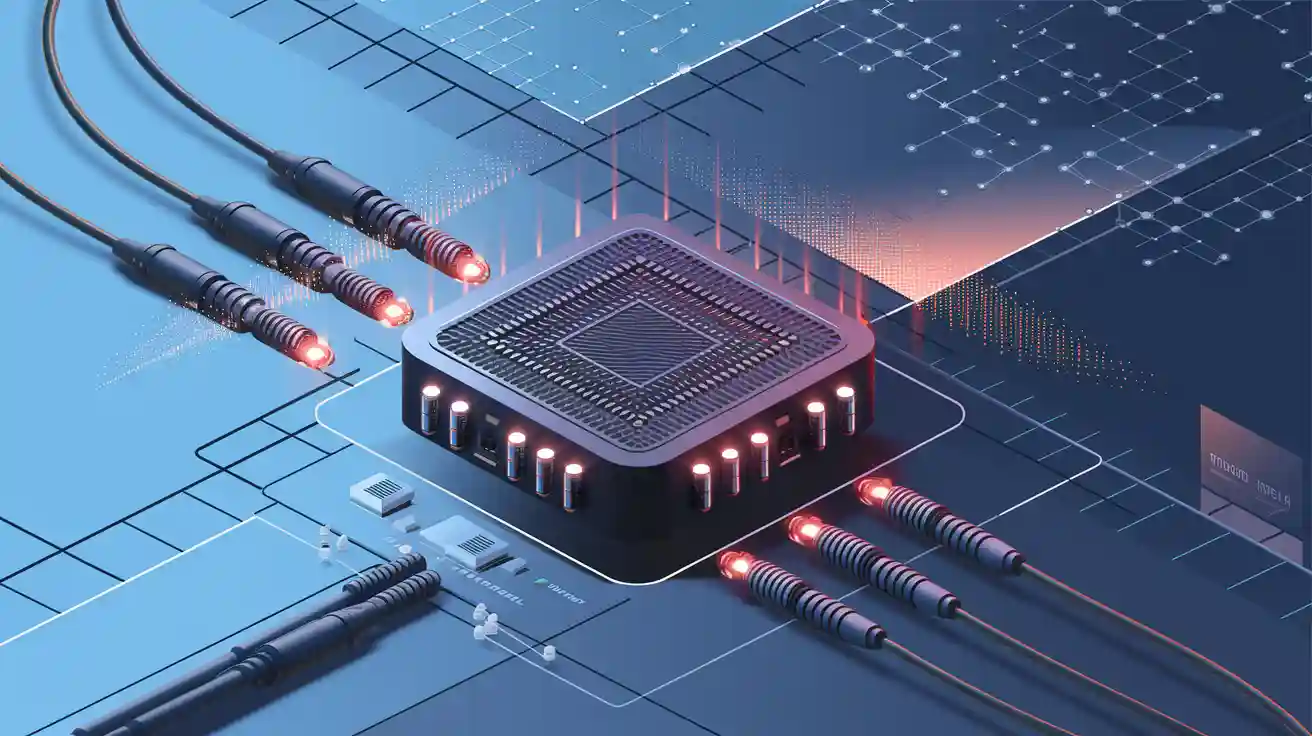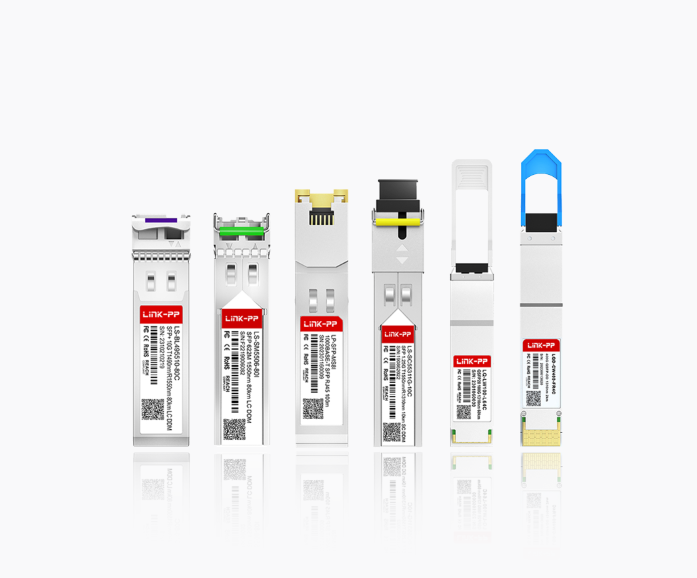1. Introduction to Optical Modules
Optical modules (also known as fiber optic transceivers) are essential components in modern communication networks, enabling high-speed data transmission by converting electrical signals into optical signals and vice versa. These compact yet powerful devices serve as the bridge between electrical equipment (such as switches and routers) and optical fiber networks, ensuring seamless data transfer in data centers, telecom networks, and enterprise IT infrastructure.
Leading manufacturers like LINK-PP produce high-performance optical modules that meet industry standards, supporting applications from 1G to 400G+ speeds.
🔍 Key Features of Optical Modules:
✔ High-speed data transmission (up to 800G with advanced PAM4/DSP)
✔ Hot-pluggable (SFP, QSFP, OSFP form factors)
✔ Digital Diagnostics Monitoring (DDM/DOM) for real-time performance tracking
2. How Optical Modules Work: Step-by-Step Breakdown

⚡ Step 1: Electrical Signal Input
The host device (e.g., a network switch) sends an electrical signal to the optical module.
⚡ Step 2: Electrical-to-Optical Conversion (E/O)
A laser driver modulates the electrical signal.
A laser diode (VCSEL for MMF, DFB/EML for SMF) emits light pulses at specific wavelengths (e.g., 850nm, 1310nm, or 1550nm).
The light is coupled into the fiber optic cable via precision lenses.
⚡ Step 3: Optical Signal Transmission
The light travels through single-mode fiber (SMF) for long-haul communication or multi-mode fiber (MMF) for short-range applications.
⚡ Step 4: Optical-to-Electrical Conversion (O/E)
A photodetector (PIN or APD) captures the incoming light.
A transimpedance amplifier (TIA) converts the light into an electrical signal.
A limiting amplifier boosts the signal for processing by the host device.
⚡ Step 5: Output to Host Device
The restored electrical signal is transmitted to the receiving switch/router for further processing.
📌 Pro Tip: LINK-PP’s optical modules integrate advanced DSP (Digital Signal Processing) to enhance signal integrity in high-speed applications like 400G/800G data centers.
3. Key Technologies in Modern Optical Modules
🔹 Modulation Techniques
Modulation | Application |
|---|---|
NRZ (Non-Return-to-Zero) | 1G/10G SFP/SFP+ |
PAM4 (4-level Pulse Amplitude Modulation) | 100G/400G QSFP-DD, OSFP |
🔹 Laser Types & Wavelengths
Laser Type | Wavelength | Use Case |
|---|---|---|
VCSEL | 850nm (MMF) | Short-range (<300m) |
DFB | 1310nm/1550nm (SMF) | Long-haul (10km–80km) |
EML (Electro-Absorption Modulated Laser) | 1550nm (DWDM) | Ultra-long-haul (100km+) |
🔹 Digital Diagnostics Monitoring (DDM/DOM)
Modern optical modules, including LINK-PP’s transceivers, support real-time monitoring of:
✅ Tx/Rx optical power
✅ Temperature & voltage levels
✅ Laser bias current
Module Type | Principle | Application |
|---|---|---|
SFP/SFP+ | 1G/10G NRZ | Enterprise LAN, FTTx |
QSFP28 | 100G PAM4 | Cloud data centers, AI/ML |
OSFP/QSFP-DD | 400G/800G PAM4+DSP | Hyperscale data centers |
DWDM Modules | Multi-wavelength multiplexing | Telecom backbone networks |
4. Challenges & Future Trends in Optical Module Design
🔧 Key Challenges
Power consumption & thermal management (critical for 400G+ modules)
Signal integrity (minimizing jitter & dispersion)
Compatibility (ensuring MSA compliance, e.g., SFF-8472)
🔮 Future Trends
✔ Co-packaged optics (CPO) for reduced power usage
✔ Silicon photonics for higher integration
✔ LPO (Linear Drive Pluggable Optics) for lower latency
💡 LINK-PP is pioneering next-gen optical solutions, including 800G coherent modules for next-level telecom and data center demands.
5. Conclusion: Why Optical Modules Are Indispensable
Optical modules serve as the "translators" of fiber-optic networks, enabling seamless electrical-to-optical (E/O) and optical-to-electrical (O/E) conversion. With advancements in PAM4, DSP, and silicon photonics, they are driving the evolution of 5G, cloud computing, and AI infrastructure.
For high-performance, reliable optical modules, explore LINK-PP’s industry-leading solutions designed for speed, efficiency, and scalability.
🔗 Learn more about LINK-PP’s optical transceivers here.




